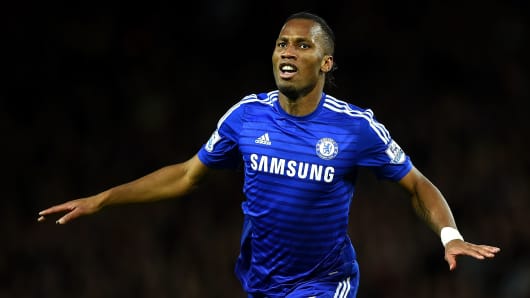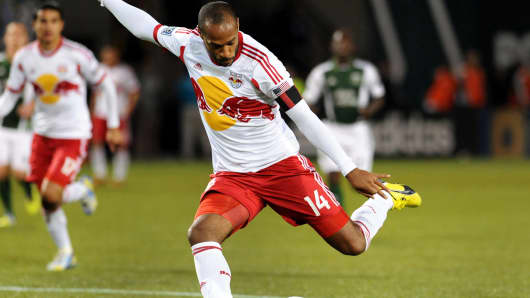Slowly but surely, the U.S. is turning itself into a global soccer power, with lots of help from an emerging professional league that’s developing talent and advancing its clout in the sport.
Last month, Didier Drogba, a 39-year-old Ivory Coast native who spent years playing for professional clubs in Britain, France and China, sparked excitement after joining the United Soccer League’s (USL) Phoenix Rising. The acquisition capped off the debut of the USL Television Network, which will partner with more than a dozen regional outlets to reach 10 million U.S. households. The USL functions as North America’s second-tier professional soccer league, having kicked off in 2011.
Much like English soccer icon David Beckham’s much ballyhooed debut with the L.A. Galaxy in 2007, Drogba’s arrival in Phoenix stokes excitement about developing U.S. soccer’s secondary tier. In a country saturated with sports, soccer stokes relatively little enthusiasm domestically, and until recently the U.S. has lacked global heft.
Big name signings aside, the USL is developing its own homegrown stars that can compete alongside the world’s best. Though the second tier remains a work in progress, the playing field is slowly shifting. The USL has blossomed into a 30-member outfit, more than doubling the number of clubs that existed in 2012.
A 2013 partnership struck between the USL and MLS, in which MLS reserves would integrate with USL pro teams, has been a big catalyst behind growing attendance figures and attracting talent to the U.S. market. Currently, nine MLS clubs have their own second-tier team, something that USL President Jake Edwards recently told CNBC would help boost new investor and public interest in the game.
“We work closely with those clubs to identify best practices, and to identify ways to make it drive awareness and drive attendance,” Edwards said. Teams like the New York Red Bulls — which until 2014 featured French forward Thierry Henry as its marquee player — have begun expanding staff and recently relocated their USL squad to nearby New Jersey.
“They’ve moved the team now to Montclair, and they’ve invested heavily into that stadium, and are trying to create a new brand and a new identity in that community,” Edwards added.
Still, the USL has faced challenges, with MLS fans slow to embrace the second tier with the same level of enthusiasm.
Last year, for example, attendance at the Red Bulls’ MLS games consistently dwarfed its USL counterpart (Red Bulls II) by thousands of fans, even as more than a million people flocked to USL matches last year. This year, officials expect that number to swell to 2 million, with soccer teams stepping up their promotion and branding efforts.
“The USL is now kind of built to be a funnel for players to get somewhere, whether that’s MLS [or] Mexico. It’s serving that purpose now, so they have a meaning behind what they do,” said Antony Merced, a follower of the league since 2010 and co-host of the “Raising Bulls” podcast devoted to Red Bulls II. He argued the USL found its identity when partnering with MLS.
Giving players a professional environment who may have lacked playing opportunities has been a huge step for U.S. soccer as a whole. The MLS used to offer a reserve league for its players that were on the roster, but were rarely featured on match day. During those days, matches were held sporadically and frequently canceled, while games functioned more as scrimmages than professional matches.
With the developmental boost of the USL, players are groomed for bigger things and the sport’s fan base is growing. Just more than 50 players have been signed to the MLS out of the USL since 2013, and at least 10 U.S. players on the under-20 national team are playing in the second tier.
When those players eventually reach the top level, they will have more experience than previous generations who had to fight for scraps of minutes with MLS teams, or journey to distinct corners of the globe to find time on the field.
Most Americans may not notice the practical effects for years to come, and will take multiple World Cup cycles to pay dividends. Yet when their time to shine arrives, U.S. soccer enthusiasts will likely to recognize the USL’s and MLS’s role in developing a system that cultivated the next generation of stars.
“We’re trying to pioneer something; we’re one of a few leagues in the world that have been able to do this at the scale we’ve embarked upon with this partnership with MLS,” said the USL’s Edwards. “And you know, we’re very happy with the progress we’ve made.”





